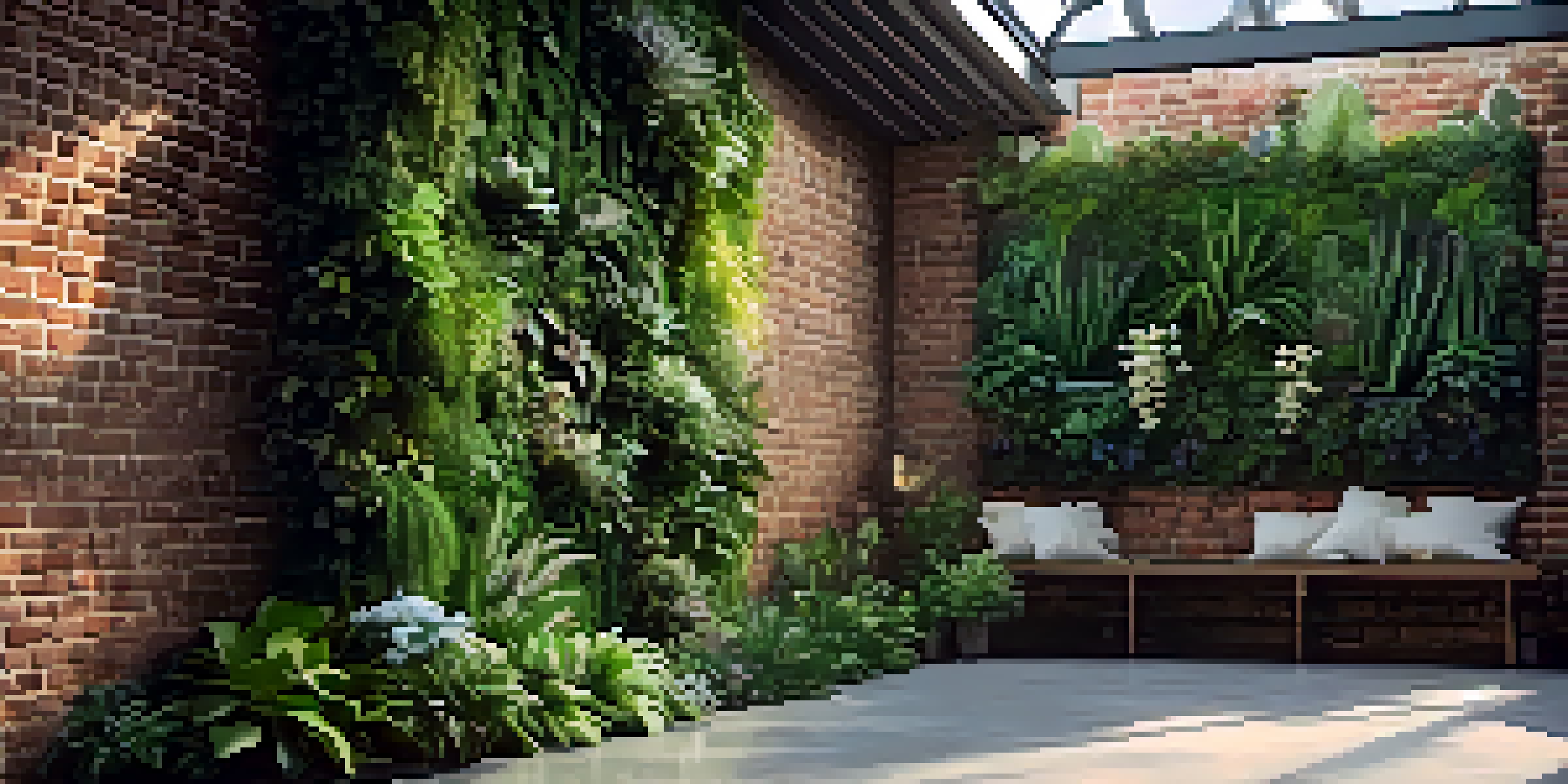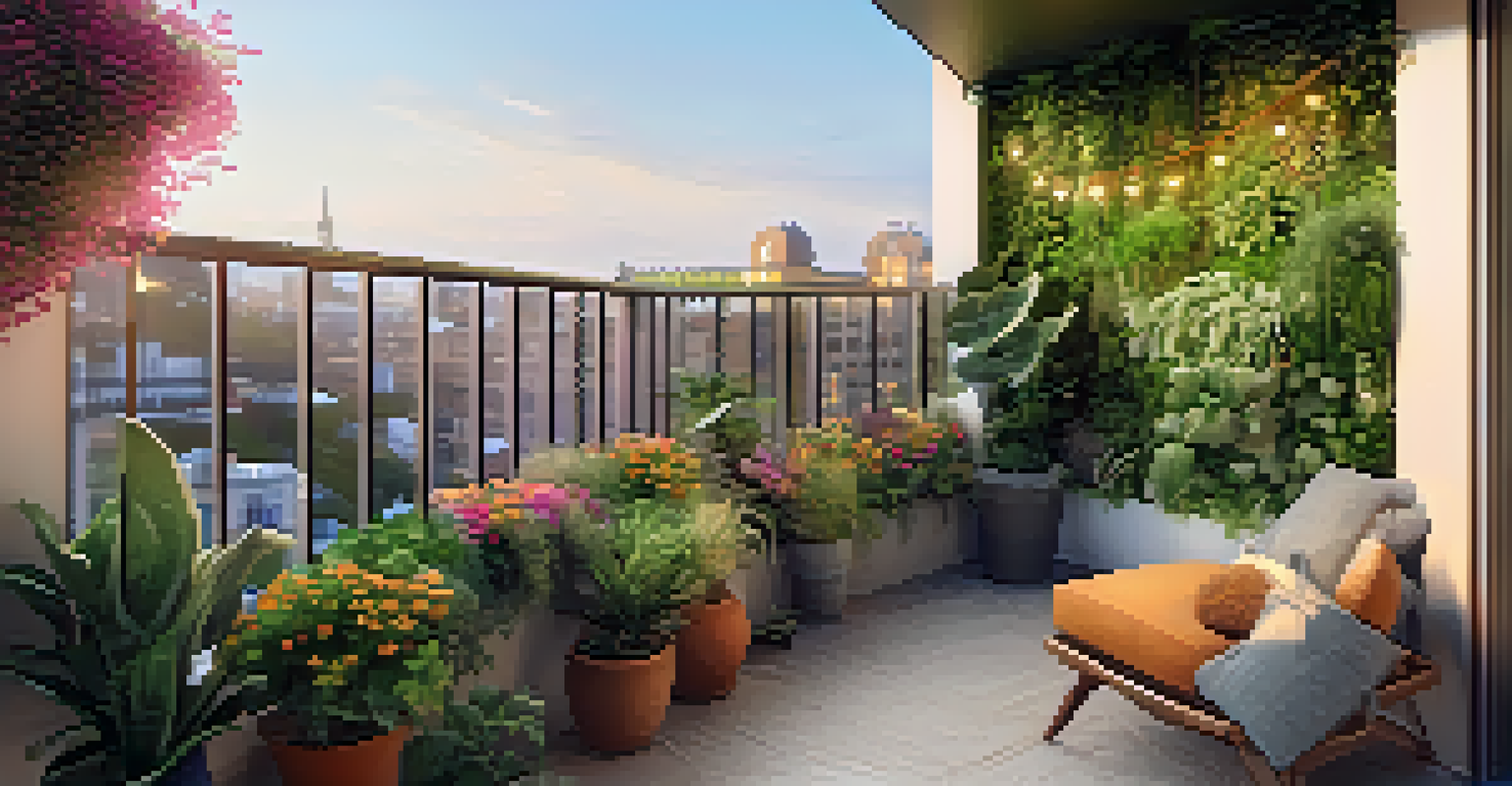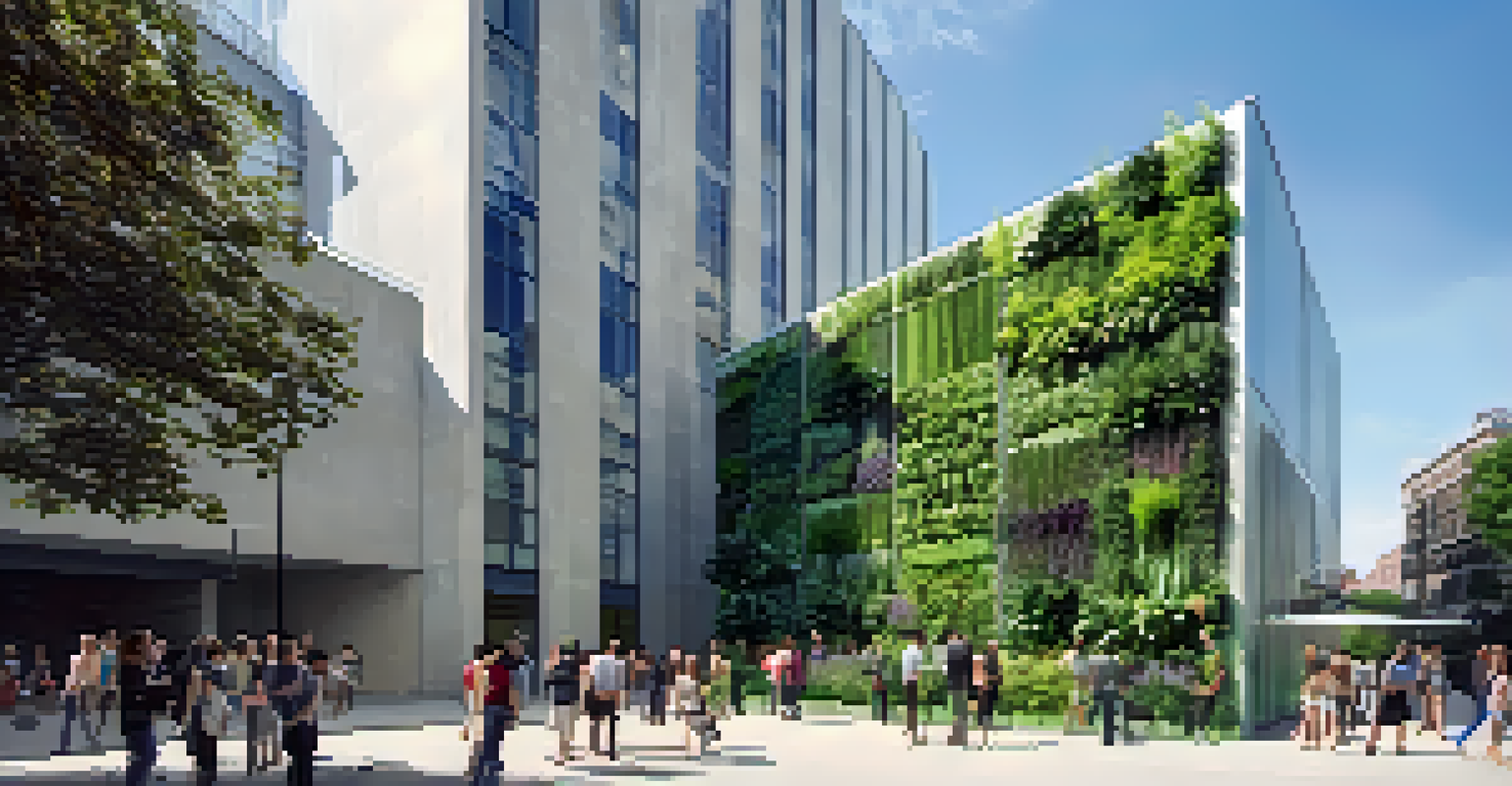Vertical Living Walls: Bringing Greenery to Outdoor Spaces

What Are Vertical Living Walls and Their Benefits?
Vertical living walls, also known as green walls, are vertical structures that are covered with plants. They can be installed indoors or outdoors and offer a unique way to incorporate greenery into any space. These walls not only enhance aesthetic appeal but also provide numerous environmental benefits.
The best time to plant a tree was twenty years ago. The second best time is now.
One of the most significant advantages of vertical living walls is their ability to improve air quality. Plants naturally filter pollutants and produce oxygen, making the surrounding area healthier. Additionally, they can help to reduce the urban heat island effect by providing shade and cooling the air.
Moreover, vertical living walls can enhance biodiversity in urban settings. By creating a habitat for various insects and birds, they contribute to a more balanced ecosystem. Whether you’re looking for a way to beautify your outdoor space or improve its environmental impact, vertical living walls are an excellent choice.
Choosing the Right Plants for Your Vertical Wall
Selecting the right plants is crucial for the success of a vertical living wall. Not all plants thrive in vertical setups, so it’s essential to choose species that are well-suited for such environments. Consider factors like light, moisture, and climate when making your selections.

For sunny locations, succulents and drought-tolerant plants can be fantastic options. On the other hand, if your wall is in a shadier spot, look for ferns or shade-loving vines. Mixing various plant types can also create a visually appealing tapestry of colors and textures.
Benefits of Vertical Living Walls
Vertical living walls enhance aesthetics, improve air quality, and promote biodiversity in urban environments.
Remember that maintenance is key to keeping your vertical wall looking its best. Choose plants that require similar care to streamline your upkeep efforts. With the right plant selection, your vertical wall can flourish and become a stunning focal point in your outdoor space.
Design Ideas to Maximize Your Vertical Living Wall
When it comes to designing your vertical living wall, creativity is your best friend. You can create patterns, gradients, or even a themed garden that reflects your personal style. Utilizing different plant heights and colors can add depth and interest to your installation.
Nature does not hurry, yet everything is accomplished.
Think about incorporating functional elements into your design, such as trellises for climbing plants or integrated planters for herbs. This adds not only beauty but also utility, especially in smaller outdoor spaces. You could even create a living wall that doubles as a privacy screen or a sound barrier.
Don’t forget to consider the backdrop of your living wall. A contrasting wall color or material can enhance the vibrancy of the plants. Lighting can also play a significant role; strategically placed uplights can highlight your wall at night, turning it into a stunning evening feature.
Maintenance Tips for Thriving Vertical Living Walls
Maintaining a vertical living wall may seem daunting, but with regular care, it can thrive beautifully. Start by establishing a watering routine, as plants in vertical setups may require more frequent hydration. An automatic drip irrigation system can simplify this process and ensure consistent moisture levels.
Regularly check your plants for signs of pests or diseases. Early detection is crucial for addressing any issues before they spread. Pruning is also essential; trimming back overgrown plants will promote healthy growth and prevent crowding.
Essential Maintenance Tips
Regular watering, pest checks, and fertilization are key to keeping vertical living walls healthy and vibrant.
Lastly, don’t forget to fertilize your living wall periodically. A balanced, slow-release fertilizer can provide the necessary nutrients for your plants to flourish. With these maintenance tips, your vertical living wall will remain a vibrant and healthy addition to your outdoor space.
The Environmental Impact of Vertical Living Walls
Vertical living walls can significantly contribute to environmental sustainability. By increasing greenery in urban areas, they help combat air pollution and reduce carbon footprints. Moreover, they can reduce stormwater runoff by absorbing rainfall, which is crucial in preventing flooding.
These walls also help to insulate buildings, lowering energy costs by keeping indoor spaces cooler in summer and warmer in winter. This energy efficiency can lead to reduced reliance on heating and cooling systems, further decreasing overall energy consumption.
Incorporating vertical living walls into our urban landscapes not only beautifies our surroundings but also fosters a healthier planet. With their numerous environmental benefits, these green structures are an essential element of sustainable design.
Incorporating Vertical Living Walls in Small Spaces
Living in a smaller space doesn’t mean you have to sacrifice greenery. Vertical living walls are perfect for compact areas, transforming even the tiniest balconies or patios into lush retreats. By going vertical, you maximize your space while bringing nature closer to home.
Consider using modular wall systems that allow you to create a custom design tailored to your space. These systems can be adjusted as your plant preferences change or as your garden grows, offering flexibility and ease of use. Plus, they can be designed to fit around existing structures like railings or fences.
Perfect for Small Spaces
Vertical living walls maximize greenery in compact areas, transforming small balconies and patios into lush retreats.
Even in small urban settings, vertical living walls can provide a sense of tranquility and connection to nature. With a little creativity, you can create a vibrant green oasis that enhances your outdoor experience, no matter how limited your space may be.
Real-Life Examples of Stunning Vertical Living Walls
Incorporating vertical living walls into public and private spaces has become increasingly popular. Take the famous CaixaForum in Madrid, for instance, where a stunning vertical garden designed by Patrick Blanc adorns the exterior, showcasing a vibrant array of plants and colors. Such installations draw visitors and create a unique urban experience.
On a smaller scale, many homeowners have embraced vertical living walls in their backyards. For example, a family in California transformed a bland fence into a beautiful green wall filled with herbs, succulents, and flowers. This not only beautified their space but provided fresh ingredients for their meals.

These real-life examples demonstrate the versatility and appeal of vertical living walls. Whether it’s a large installation in a public space or a cozy design in a home garden, the impact of greenery is undeniable, inspiring others to create their own green havens.